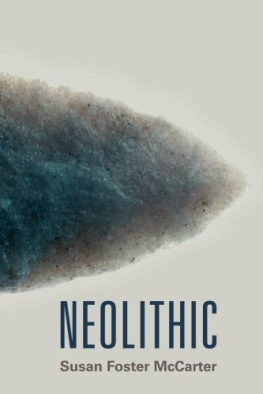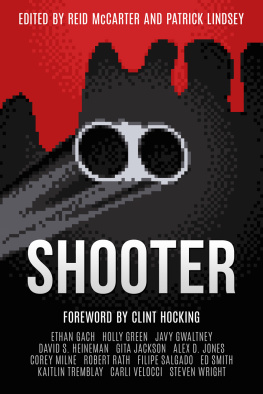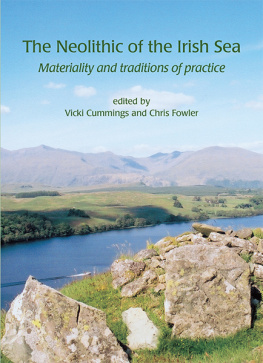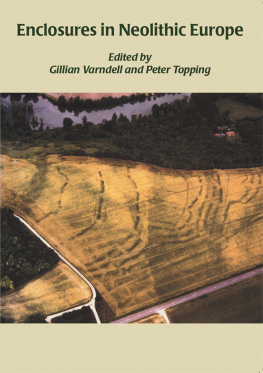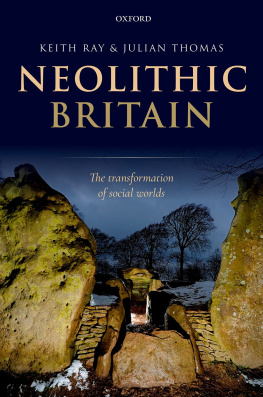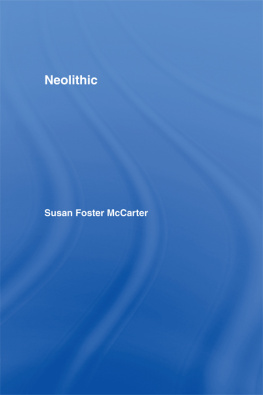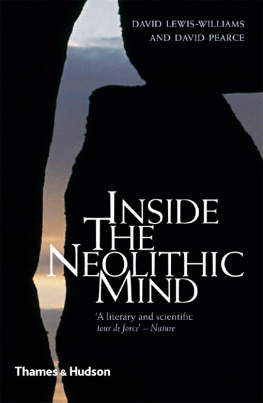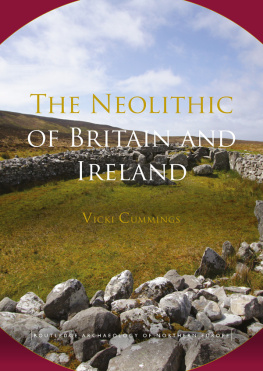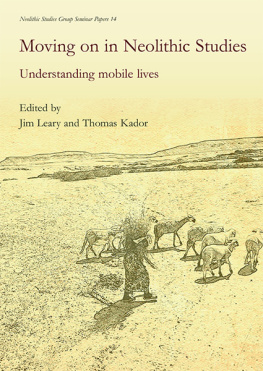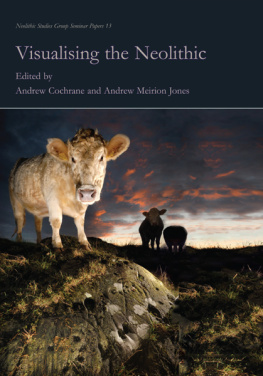Susan McCarter - Neolithic
Here you can read online Susan McCarter - Neolithic full text of the book (entire story) in english for free. Download pdf and epub, get meaning, cover and reviews about this ebook. year: 2007, publisher: Taylor and Francis, genre: History. Description of the work, (preface) as well as reviews are available. Best literature library LitArk.com created for fans of good reading and offers a wide selection of genres:
Romance novel
Science fiction
Adventure
Detective
Science
History
Home and family
Prose
Art
Politics
Computer
Non-fiction
Religion
Business
Children
Humor
Choose a favorite category and find really read worthwhile books. Enjoy immersion in the world of imagination, feel the emotions of the characters or learn something new for yourself, make an fascinating discovery.
- Book:Neolithic
- Author:
- Publisher:Taylor and Francis
- Genre:
- Year:2007
- Rating:5 / 5
- Favourites:Add to favourites
- Your mark:
- 100
- 1
- 2
- 3
- 4
- 5
Neolithic: summary, description and annotation
We offer to read an annotation, description, summary or preface (depends on what the author of the book "Neolithic" wrote himself). If you haven't found the necessary information about the book — write in the comments, we will try to find it.
Neolithic — read online for free the complete book (whole text) full work
Below is the text of the book, divided by pages. System saving the place of the last page read, allows you to conveniently read the book "Neolithic" online for free, without having to search again every time where you left off. Put a bookmark, and you can go to the page where you finished reading at any time.
Font size:
Interval:
Bookmark:
NEOLITHIC
How did people move from caves to condos? When did the rich become different from everyone? Who built Stonehenge? And who invented the hoe?
The answer to all these questions lies in the Neolithic era, when peoples lives were irrevocably altered by the invention of agriculture.
This book is a lively and engaging introduction to this momentous period during which our ancestors stopped hunting and gathering and built permanent, settled villages where they developed farming, herding, new technologies and new social systems: in short, when all the patterns of modern life first appeared.
After familiarizing the reader with essential archaeological and genetic terms and concepts, McCarter explores the latest evidence from scientific analyses as varied as pollen identification, radiometric dating and DNA research, condensing them into an up-to-date academic account which stays accessible to even the novice reader.
Focusing primarily on sites in southwest Asia, Neolithic addresses questions such as:
Which plants and animals were the first to be domesticated, and how?
How did life change when people began farming?
What were the first villages like?
What do we know about the social, political and religious life of Neolithic people? And
What happened to human health as a result of the Neolithic transition?
Lavishly illustrated with almost a hundred images, this enjoyable book is an ideal introduction both for students of archaeology and for general readers interested in our past.
Susan Foster McCarter holds a degree in Mediterranean Prehistory from Brandeis University. For almost twenty years she has been a member of the Department of Near Eastern Studies at Johns Hopkins University. She also teaches art history and archaeology at York College of Pennsylvania.
NEOLITHIC
Susan Foster McCarter
Illustrations by Catherine E. Weaver

First published 2007
by Routledge
711 First Ave, New York, NY 10017
Simultaneously published in the UK
by Routledge
2 Park Square, Milton Park, Abingdon, Oxon OX14 4RN
Routledge is an imprint of the Taylor & Francis Group, an informa business
2007 Susan Foster McCarter
Reprinted 2008 (twice)
Typeset in Goudy by
RefineCatch Limited, Bungay, Suffolk
All rights reserved. No part of this book may be reprinted or reproduced or utilized in any form or by any electronic, mechanical, or other means, now known or hereafter invented, including photocopying and recording, or in any information storage or retrieval system, without permission in writing from the publishers.
British Library Cataloguing in Publication Data
A catalogue record for this book is available from the British Library
Library of Congress Cataloging in Publication Data
A catalog record for this book has been requested
ISBN10: 0415364132 (hbk)
ISBN10: 0415364140 (pbk)
ISBN10: 0203015320 (ebk)
ISBN13: 9780415364133 (hbk)
ISBN13: 9780415364140 (pbk)
ISBN13: 9780203015322 (ebk)
CONTENTS
ILLUSTRATIONS
PREFACE
In his 1956 memoir, Still Digging, Sir Mortimer Wheeler wrote that when he began his studies before the First World War, few people wanted to become professional archaeologists. At that time, he notes, the past had no future in it. Fifty years have passed since Wheelers book, and today archaeology is flourishing. Thousands of archaeologists explore everything from modern landfills to ancient caves as they attempt to provide a context for the antics and absurdities of modern life. Their conclusions appear in dozens of scientific journals devoted to archaeology. At the same time, web sites, popular magazines, newspapers, movies, and television series offer the general public entertaining if not always accurate reconstructions of ancient life. They invite you to hold your breath as Egyptian tombs are opened for the first time in millennia, choose sides in the controversies surrounding the Shroud of Turin, and imagine the chaos as Pompeii and Herculaneum are destroyed by the eruption of Vesuvius.
Like the three examples Ive just mentioned, almost all the popular presentations are about well-known periods. Only a few deal with prehistory the roughly two-million year period during which all the important aspects of human culture first appeared and thats too bad, because if you really want to understand the present, prehistory is the place to start. In the past half-century, specialists in more than a dozen different areas of research have turned their attention to prehistoric life: some study our earliest human ancestors, others explore the cultural achievements of the first modern humans, and still others, like me, focus on a period called the Neolithic. We want to know why people domesticated plants and animals, why they began living in villages, and why the political, social, economic, and religious systems that they developed continue to define our lives.
Almost every time I meet people and tell them that I study archaeology, the response is the same: Oh! Arent you lucky! I wanted to be an archaeologist when I was little. Im always slightly surprised, because when I was a child I never thought about being an archaeologist. Im not even sure I knew what an archaeologist was. In fact, until I was in graduate school Id never considered archaeology as a career. But the minute I took my first course about the Neolithic I was hooked, and my first excavation experience more than met my expectations. Ayios Epiktitos Vrysi is a small Neolithic village on the north coast of Cyprus. It lies a few feet above the Mediterranean, on a small bay where racehorses from a nearby breeding farm swim at dawn (at least they did in those days). Behind the site are the romantic peaks of the Kyrenia Mountain range and on clear days, the Taurus Mountains in Turkey are visible across the water. Its one of the most beautiful places Ive ever seen Neolithic Cypriots certainly knew where to build. I was assigned to the pottery shed, and as soon as I began processing the ceramic remains, I began to ask questions. Why did Neolithic people prefer ceramic vessels to stone, wood and skin containers? Why did the bold geometric patterns on the bowls and jugs look a lot like Navaho blankets and Turkish rugs? Who were the potters? What did they use the pottery for? Did they sell it? To whom? How was it paid for? Thirty years later prehistorians still dont have answers to all of these questions, but we have some reasonable theories.
This book is intended to share what Ive learned about the Neolithic. In it, I provide an overview of the period, and then discuss the various aspects of modern life that appeared during this most interesting (and significant) stage of human cultural development. The Neolithic arose all over the world, and I draw examples from cultures from Asia to the Americas, but because the earliest Neolithic sites are found in an area stretching roughly from Greece on the west to Iran on the east, and from the Black Sea on the north to the Sinai Peninsula on the south, I focus on this region.
ACKNOWLEDGMENTS
Many people helped make this the project a reality. Kate Weaver, from the Department of Art as Applied to Medicine at the Johns Hopkins University School of Medicine, agreed to create a few illustrations, and ended up as a full partner. The book is much better, and much more entertaining, because of her efforts. My academic colleagues, especially Pam Hemzik, reworked class schedules to give me uninterrupted time to write. Specialists from many fields provided support: Mel Atkins suggested bibliographical sources for the Jmon culture and permitted me to adapt a photograph from
Next pageFont size:
Interval:
Bookmark:
Similar books «Neolithic»
Look at similar books to Neolithic. We have selected literature similar in name and meaning in the hope of providing readers with more options to find new, interesting, not yet read works.
Discussion, reviews of the book Neolithic and just readers' own opinions. Leave your comments, write what you think about the work, its meaning or the main characters. Specify what exactly you liked and what you didn't like, and why you think so.

